
Governments, companies and consumers are striving to be environmentally friendly and to promote the use of green energy like never before. In this new green era, many renewable energy stocks are going to thrive.
The evidence of this trend is all over, from the Biden administration’s embrace of clean energy to Tesla’s (NASDAQ:TSLA) record-setting second-quarter sales. Even the U.S. military is getting in on the fight against climate change, with a marine base recently reaching its goal of net-zero carbon emissions. Outside of the U.S., the EU, China and many other nations are throwing tremendous support behind green energy initiatives as well.
Consequently, I’ve selected seven energy stocks to buy that I believe will enable investors to turn $20,000 into $1 million over the long run.
SolarEdge (SEDG)
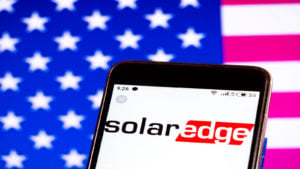
Source: IgorGolovniov / Shutterstock.com
Israel-based SolarEdge (NASDAQ:SEDG) markets solar inverters that are used to convert sunlight into electricity. Goldman Sachs recently identified SEDG as one of two clean energy stocks that it believes are well-positioned to benefit from the Biden administration’s initiatives.
The investment bank thinks that SolarEdge, with its roughly 40% of the U.S. microinverter market, will continue to beat analysts’ earnings estimates. Goldman says that worries about the company’s performance in the EU are overdone, noting SolarEdge is actually doing quite well in the region. Additionally, Goldman contends that SEDG is likely underestimating its own near-term gross margin outlook.
SEDG stock has a forward price-earnings ratio of 26.7. That valuation is rather attractive considering that analysts, on average, expect the company’s earnings per share to surge to 84% this year and another 15% next year. Also noteworthy is that Investor’s Business Daily gives SEDG an EPS rating of 97 out of 99.
First Solar (FSLR)
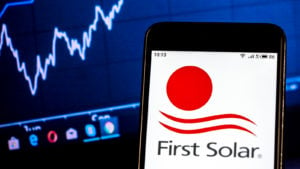
Source: IgorGolovniov / Shutterstock.com
The other energy stock Goldman Sachs is bullish on is First Solar (NASDAQ:FSLR), which is a U.S. manufacturer of solar panels. According to Goldman, First Solar has “multiple catalysts brewing in 2H23 that we see having the potential to drive consensus estimates — and thus the stock — higher.”
This includes the firm’s potential announcement of more factories to expand capacity. Moreover, the investment bank’s research indicates that demand for solar panels by American utilities increased after the Treasury Department provided new information about the requirements for sourcing parts for panels domestically in order to obtain new tax breaks.
Goldman placed a “buy” rating and a $272 one-year price target on FSLR stock. That is 37% above the current level.
Finally, on July 17, First Solar announced that Israel-based Energix had ordered a gigantic 5 gigawatts (GW) of its modules. The products are slated to be delivered between 2026 and 2030, indicating strong sales later in the decade.
American Superconductor (AMSC)
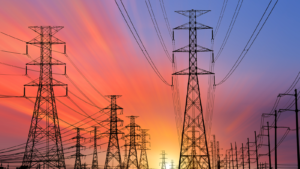
Source: Pand P Studio / Shutterstock.com
On July 18, American Superconductor (NASDAQ:AMSC) announced that it had received $34 million worth of orders for its “new energy power systems.” These products regulate electricity flows.
The firm’s revenue from its new energy power business is likely to expand rapidly. That’s because the customers that are buying its products are in sectors, including renewable energy and the semiconductor space, that are growing quickly. AMSC also counts the U.S. Navy among its customers, providing “high-temperature superconductor (HTS)-based ship protection systems.” Given the Navy’s huge budget, there’s a good chance that it will spend a great deal on AMSC’s power products in the future.
Meanwhile, another one of AMSC’s businesses, providing “wind turbine electronic controls and systems,” saw revenue rise 19% in the latest fiscal year to $11.4 million, as shipments to one of its top customers — India’s Inox — increased. The firm expects to benefit from further orders from Inox.
Finally, American Superconductor said in its latest earnings call that it’s having “active detailed discussions with several utilities” about providing them with its Resilient Electric Grid (REG) system, which makes it easier and cheaper for utilities to prevent blackouts.
Maxeon Solar (MAXN)
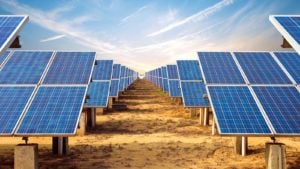
Source: Shutterstock
French oil giant Total owns a 34.6% stake in solar panel maker Maxeon Solar (NASDAQ:MAXN). As a result, I believe that MAXN is well-positioned to supply a large number of solar panels to the EU, which is rapidly increasing its reliance on solar power.
According to the website Oilprice, “European countries are desperate to get their hands on affordable solar infrastructure.” On a year-over-year basis, the bloc’s imports of solar panels grew 22.4% a month, on average, in the first five months of the year.
On June 14, investment bank Roth MKM raised its rating on MAXN to “buy” from “neutral.” The firm set a $40 price target on the stock, implying upside of 47% from the current level.
Roth MKM expects the company’s margins to climb in 2023 and believes that it may enter the black in 2024. The firm noted that Maxeon’s panels have competitive advantages because they “increase installer profit and increase total customer savings over the lifetime of the system,” Seeking Alpha reported.
Darling Ingredients (DAR)

Source: ThePowerPlant/ShutterStock.com
Through Darling Ingredients’ (NYSE:DAR) joint venture with refiner Valero (NYSE:VLO), it is a major supplier of renewable diesel. Unsurprisingly, the demand for renewable diesel has surged amid the increased emphasis by governments and companies on cutting carbon emissions.
The joint venture, known as Diamond Green Diesel, plans to produce sustainable aviation fuel (SAF) starting in 2025. The project is slated to produce about 470 million gallons per year of SAF. As airlines seek to cut their carbon emissions, their demand for SAF is very strong. Additionally, the federal government has established significant tax credits for SAF. On its most recent earnings call, Darling management indicated that producing SAF would significantly raise its profit margins.
The Street has become enamored with DAR recently, with shares rising 12% over the past month. The catalyst for the surge appears to be the acquisition of Argentina-based agricultural product company Chacraservicios by Chevron (NYSE:CVX) and Bunge.
The latter two companies made the deal in order to increase their output of renewable diesel through their own joint venture. The move suggests that Chevron and Bunge are upbeat about the outlook of renewable diesel and that DAR could become a takeover target down the road.
Plug Power (PLUG)
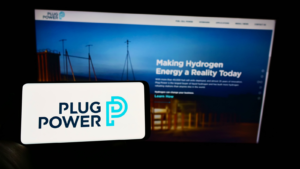
Source: Wirestock Creators / Shutterstock.com
In the latest sign that Plug Power’s (NASDAQ:PLUG) electrolyzer business is going to be quite lucrative, the company announced on July 13 that it had obtained an order for 100 megawatts of electrolyzes from an unnamed European oil and gas company. According to PLUG, the electrolyzes will generate about 43 tons of green hydrogen a day.
Electrolyzers are used to create green hydrogen. The fact that a major fossil fuel company is ordering PLUG’s electrolyzers bodes well for the company. The deal is another indication that demand for green hydrogen is rising and that other oil and gas firms are likely to follow suit. Since the largest fossil fuel companies have a great deal of cash, they will be able to purchase large amounts of PLUG’s electrolyzers.
As I noted in a previous column, investment bank Northland Capital upgraded PLUG stock to “outperform” recently. The firm believes the company is well-positioned to generate positive cash flow over the longer term.
Orsted (DNNGY)
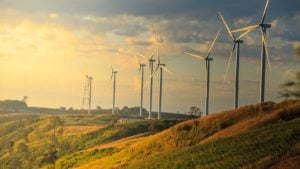
Source: Shutterstock
On June 8, Orsted (OTC:DNNGY), a Denmark-based developer of wind energy projects, raised its long-term EBITDA growth target to 15% from 12% and increased its average return on capital employed outlook to 15% from 11%-12%. Moreover, Orsted said it would raise its dividend by a high-single-digit percentage each through 2025.
Boding well for the company’s outlook in the U.S., on July 5, the Bureau of Ocean Energy Management approved Orsted’s application to install 98 wind turbines off New Jersey’s coast. Additionally, New Jersey’s legislature agreed to allow the firm to forego reimbursing the state for federal tax credits it will receive.
I continue to believe that Orsted will benefit tremendously from the EU’s goal of vastly expanding its wind-energy capacity. And amid the increased demand for electricity as the sale of electric vehicles surges, other countries, including the U.S. and China, are also looking to greatly expand their utilization of wind power.
On the date of publication, Larry Ramer was long AMSC, MAXN, PLUG and DAR. The opinions expressed in this article are those of the writer, subject to the InvestorPlace.com Publishing Guidelines.





